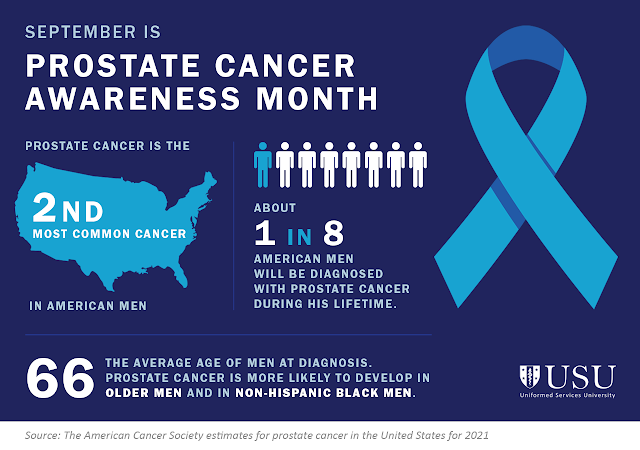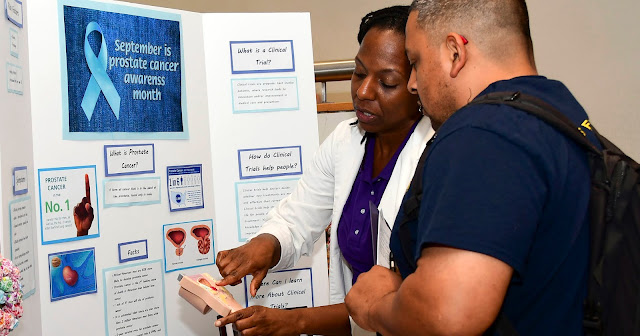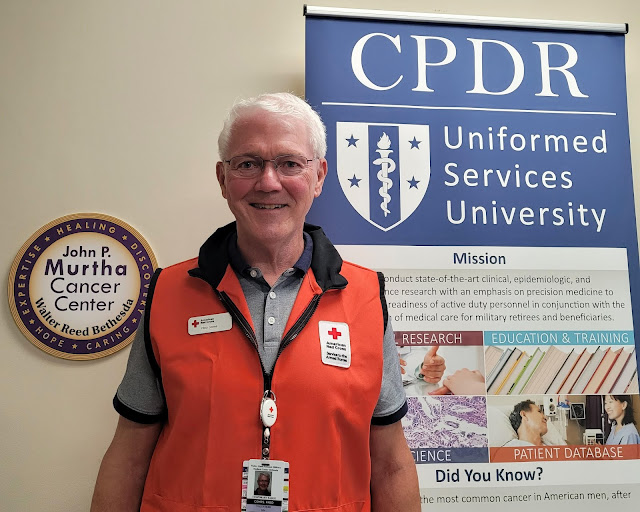September is National Prostate Cancer Awareness Month
By Ian Neligh
When 69-year-old retired Navy veteran Fred Cohrs received the email from his doctor informing him that he had prostate cancer, he was literally “paralyzed with fear.”
“I panicked as most people do when they hear the C-word,” says Cohrs. “It really threw me into a tail-spin.”
The American Cancer Society estimates this year there will be about 248,530 cases of prostate cancer in the United States and 34,130-related deaths. Prostate cancer is the second leading cause of cancer death for men behind lung cancer.
Because one in eight men will receive a prostate cancer diagnosis during their lifetime, health experts recognize September as National Prostate Cancer Awareness Month.
The goal of the education campaign, going as far back as 1999, is to help increase public awareness of the disease, provide education about symptoms and the risks prostate cancer poses.
With the growing prevalence of the cancer, Congress established the Uniformed Services University’s Center for Prostate Disease Research (CPDR) in 1992 with the mission of studying prostate cancer and prostate disease in the US Military Health Care System.
Seven years later, CPDR, which falls under the Department of Surgery at USU, expanded to a disease research facility in Rockville, Md. In 2000, CPDR opened a fully dedicated prostate cancer center at the old Walter Reed Army Medical Center in Washington, DC. The center later moved into its new location at the Walter Reed National Military Medical Center in Bethesda, Md. in 2011.
CPDR now has the only free-standing prostate cancer research center in the country and provides research and care to military beneficiaries suffering from the disease.
Since the beginning, CPDR has focused on patient education and offers a nurse educator, guidance, and counseling services as well as a prostate cancer support group. Patients can also receive a quarterly newsletter which currently has 2,220 subscribers, a Peer Support Counselor Program and “battle buddy” that can help patients know what to expect when going through surgery.
For Cohrs, the diagnosis was terrifying, but the support of others provided by CPDR and a former prostate cancer patient who had gone through surgery helped immensely.
The former patient assigned to Cohrs helped him with his questions—from what to expect after the procedure to how you deal with a catheter for eight days after surgery.
“He was very helpful in talking me through diet and exercise and all that kind of stuff, as he had experienced it, and so it was just a big help to me,” says Cohrs.
 |
| (Infographic by Sofia Echelmeyer, USU) |
Cohrs’ treatment was successful. He began attending one of the CPDR’s prostate cancer support groups and volunteering to offer support to others going through treatment. Soon, he was asked to help facilitate one of the support group meetings. This year, Cohrs began attending the educational meetings for new prostate cancer patients at Walter Reed held every Monday.
He says he volunteers his time to offer the same kind of support that he received and to help those being treated for prostate cancer, which made an enormous difference for him.
“It just seems to be a very helpful thing,” Cohrs says of his volunteer work. “It seems to be as helpful on my end as a volunteer as I thought it was when I was a scared patient to hear that somebody is here and had treatment for prostate cancer and they’re still around and able to live life.”
The Centers for Disease Control and Prevention says screening and treating prostate cancer before it spreads may lower deaths in some men. More than 3.1 million men in the United States who have received a prostate cancer diagnosis are still alive today.
Cohrs, now 73, says he often stands up before the new patients and tells them that just four years ago he was where they are now, and he’s there to help them understand that they’re not alone.






